Fishing Roundup: Red snapper bonanza has arrived; here's some info
By the time you’re reading this, it’s damn near lunch time at Donald’s Bait & Tackle.
Craig Patterson, owner-operator of the longtime shop on the Port Orange Causeway, checked in at 3 a.m. Friday, and, “after a few cups of coffee, we start dipping.”
He assumes he’ll sell thousands of pinfish, along with gobs of frozen bait — sardines, herring, cigar minnows, squid, etc. — all to those taking advantage of this two-day red snapper bonanza.
This year’s “season” for red snapper is Friday and Saturday of this week, the only two days recreational fisherman can legally keep one of the prized fish in federal waters, which begin three miles out. Yes, keep one. That’s the daily bag limit, per angler. That’s why it’s good to take a few stragglers, even if they’re just along for the ride.
Sounds crazy, yes, but only because it truly is rather crazy for the Feds to create such a mad rush instead of, say, spreading out the season as they do over in the Gulf waters, where state officials make the call — raise your hand if you’ve ever noticed some state-versus-federal discrepancies.
“But wait!!!” you say. “I’ve been seeing red snapper on the grocer’s ice all week. Are these preseason snapper?”
Nope, these are commercially caught red snapper. The commercial red snapper season — for working anglers licensed to catch and sell them — began this past Monday and runs through the end of the year, unless the annual catch limit is reached before then.
This year’s limit is 12,854 fish, or 124,815 pounds. To help spread out that catch throughout the second half the year, a commercial fisherman can bring back no more than 75 gutted pounds each day.
And since we’re talking red snapper …
● It’s not just the recreational angler who wants to loosen the reins on red snapper.
“I don’t think there should be a moratorium on the commercial side,” says John Polston, who has an interest in such things — he owns King’s Seafood on U.S. 1, just south of Port Orange on Rose Bay.
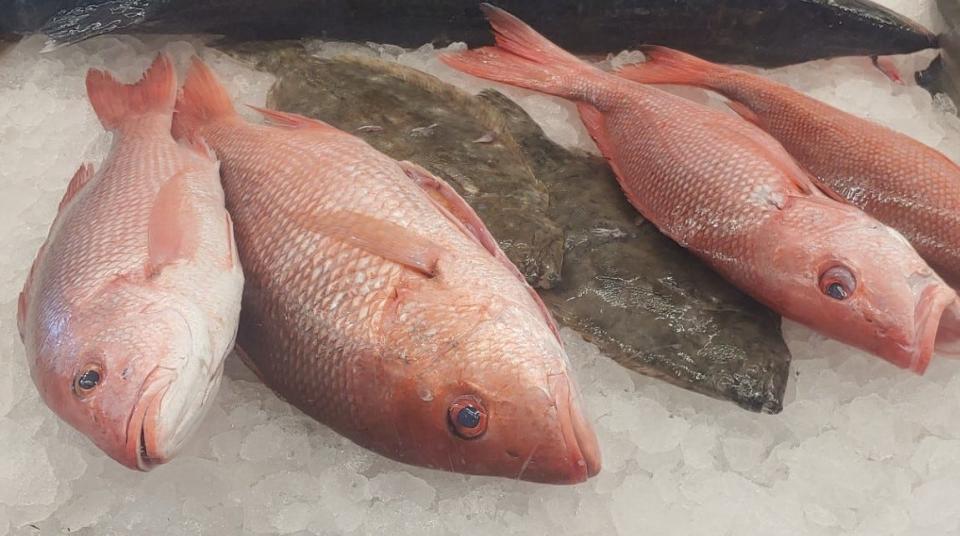
“We should be able to catch more than 75 pounds. We’re the people who feed the public. Let’s say you don’t have a boat, let’s say you don’t like to go fishing, but let’s say you like to eat red snapper. Why can’t you buy red snapper at my store all year long?”
When Polston buys red snapper from one of his commercial folks, a Florida Trip Ticket is filled out and the state eventually gathers that info to keep track of the ongoing count.
● Local offshore anglers, without fail, will tell you they pull up more red snapper, year-round, than any other fish when they’re 20 or so miles out, fishing the reefs at 80-100 feet, give or take.
“There are plenty of red snapper,” is the universal quote. The Feds, however, through their monitoring, suggest not enough of those red snapper are adult fish who will help grow and maintain the population if left alone.
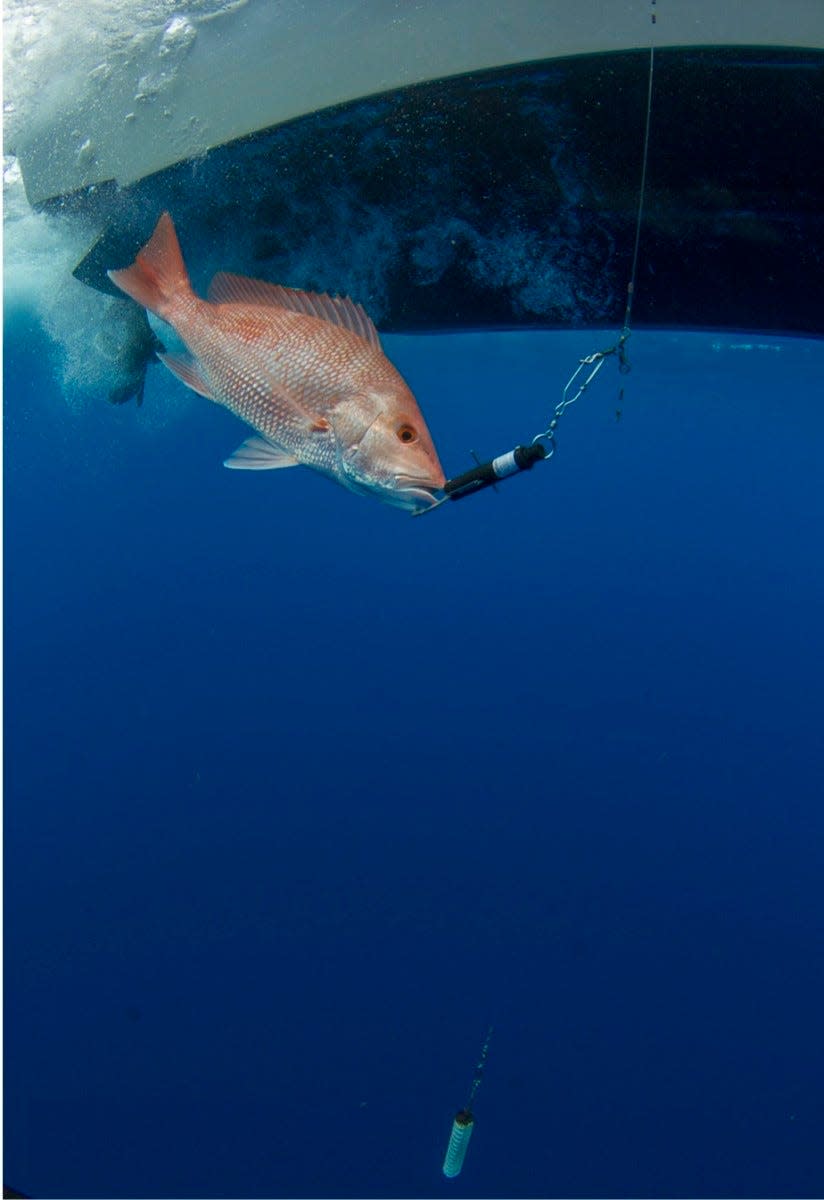
Problem is, they act like they don’t want to be left alone. And that’s why, in the past couple years, each offshore boat has a descending device, designed to ease a red snapper back to its desired depth slowly, without further disturbing the built-up gasses bloating its innards due to rising quickly from the deep.
Works well on paper, but sharks don’t read. If they don’t get your catch on its way to the boat, they might on its way down the escalator.
● In another effort to increase the red snapper’s survivability, non-stainless steel circle hooks are a regulated must. Why? In the case of a breakoff, the non-stainless hook will soon rust away instead of remaining lodged forever. And circle hooks are much more likely (by design) to catch in the fish’s jawline instead of the innards.
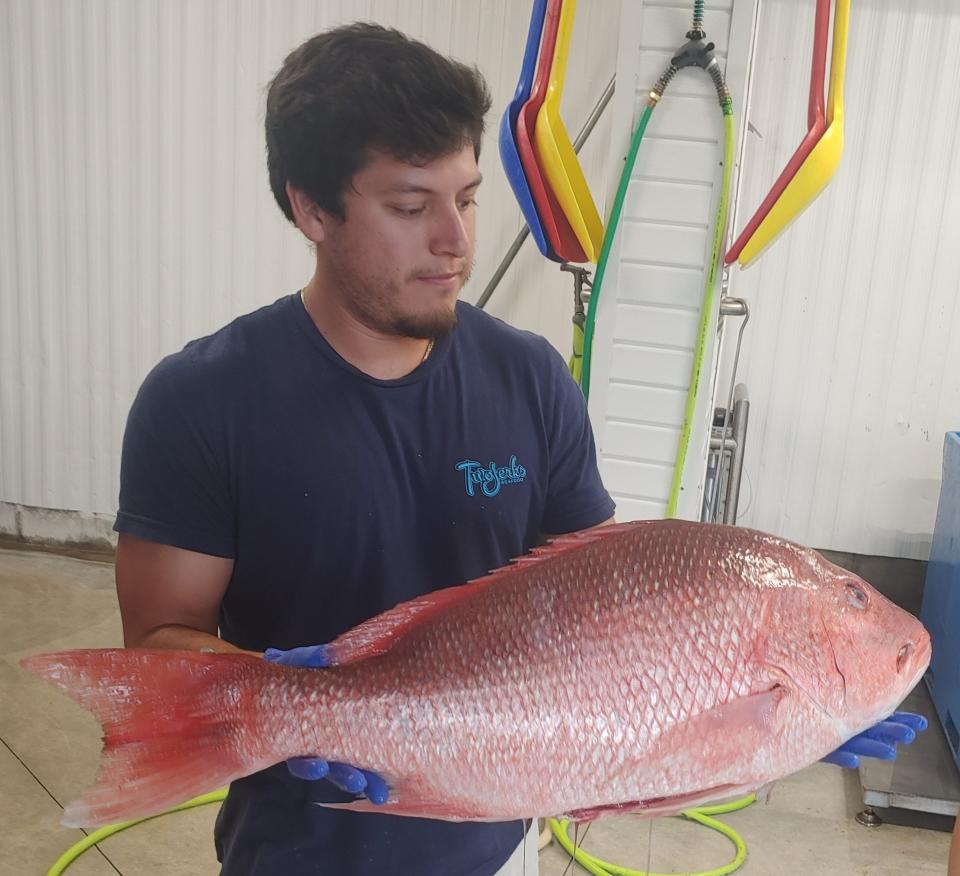
● Many of the pictures you’ll see from this weekend will show a fairly fat red snapper. July is the height of spawning season, and if that gets you scratching your head, you ain’t alone.
“They’re all blown up; that’s eggs in them,” Polston says. “If we’re having a problem, shouldn’t we at least let them spawn? You see, science goes out the window when they get too much grief from the recreational fishermen.
“But they don’t give a (bleep) about us, because there’s only a few of us.”
● On the bright side, conditions will likely be better than they were last year, and that’s important because, without fail, some offshore-bound boats won’t be fully cut out for such work.
It’s looking like predominantly south winds, with some wavering out of the southeast and southwest, and nothing heavy. Seas 2-3 feet with decent intervals, which suggests there’s nothing to worry about but the persistent afternoon thunder-boomers and, of course, “Who’s pitching in with gas money?”
Halifax/Indian River
You know how it goes.
“The bite in Edgewater and the Oak Hill area slacked off,” says Art Mowery, a regular on the waters of SeVo (what us hipsters call Southeast Volusia). “I moved down south of Haulover Canal, and the bite is very good. Lots of trout, a few reds, and seeing some tarpon in the area, too.”
Didn’t hear from Art the following day, but the SeVo/Haulover situations could’ve easily reversed.
Perhaps they’re clearing the way for snapper hunters storming out to sea, but there’s been less talk of quality fish in Ponce Inlet this week. “A nice red or snook being caught here and there,” says Capt. Jeff Patterson (Pole Dancer).
Cast-netters are still getting white shrimp in the Daytona Beach area of the Halifax.
Overall, the best summertime bet remains the mangrove snapper, the one good-eatin’ fish that doesn’t mind when the aquatic hangouts grow warmer than grandma’s living room.
Offshore
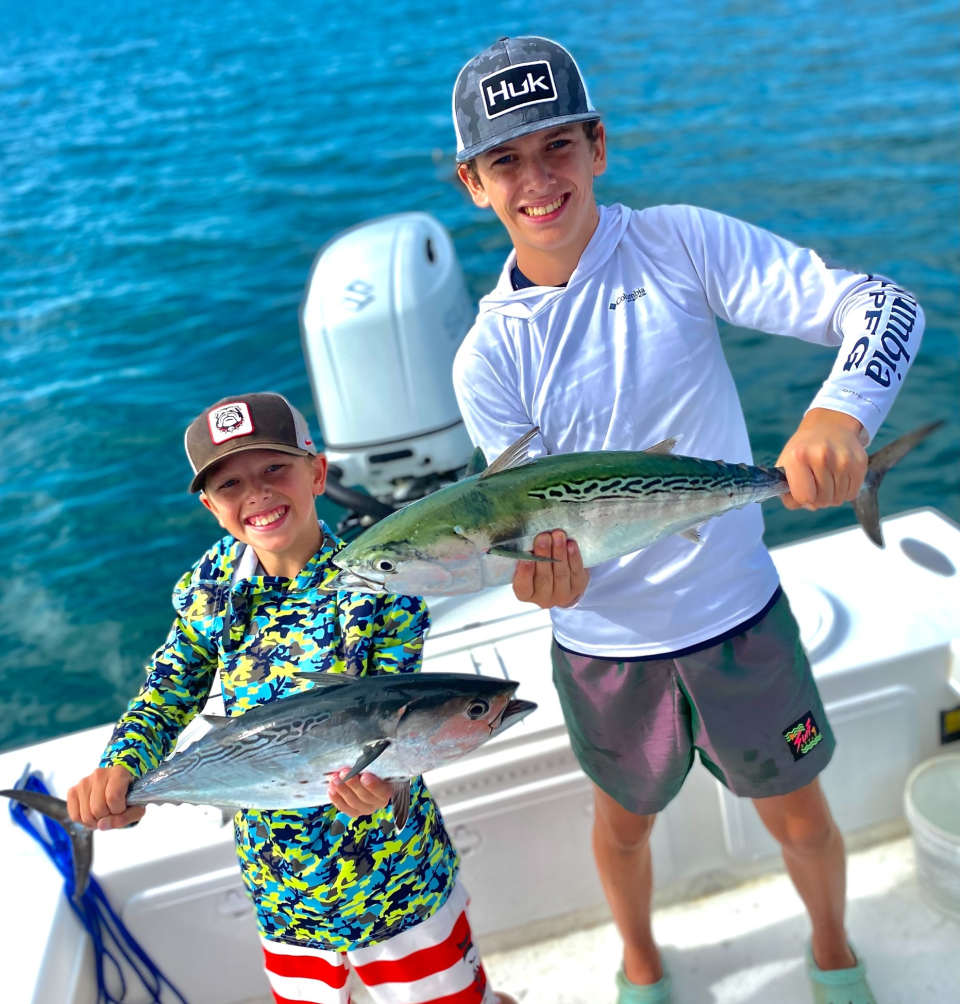
The red snapper bonanza is dominating the conversations and the waterways this week, but much closer to shore, there’s been a variety of quality hookups.
Capt. Jeff and others have been targeting nearshore tarpon with live croakers and pinfish, while also getting into some bonito.
Oh, and plenty of sharks just off the coastline. As far as unwanted bycatch, the shark in recent years has become the catfish of the Atlantic.
Surf
Plenty of whiting as well as a few pompano still hanging around, with the pomp’s small (and darn cute) cousin, the palometa, still making some noise.
But we’re hearing about more and more flounder being found from the shoreline these days. And you don’t have to make a mighty heave to find them. The know-it-alls say to toss your bait — mudminows, shrimp, croakers, cutbait … whatever — to the back edge of first sandbar on an outgoing tide.
That is, unless you find a guy who says try the front edge on an incoming tide! Either way, the surf flounder is the same as its river kin — it sits there, camouflaged, waiting for the food to come its way. You know the type.
Flagler
Much the same. Unless you go early or late, the river’s best offerings are mangroves (good tacos) and jacks (good fight).
Some flounder in the surf up that way, too.
Quite a few tarpon sightings throughout the river, but the ratio of tarpon sightings to tarpon hookups remains a wide gulf.
St. Johns
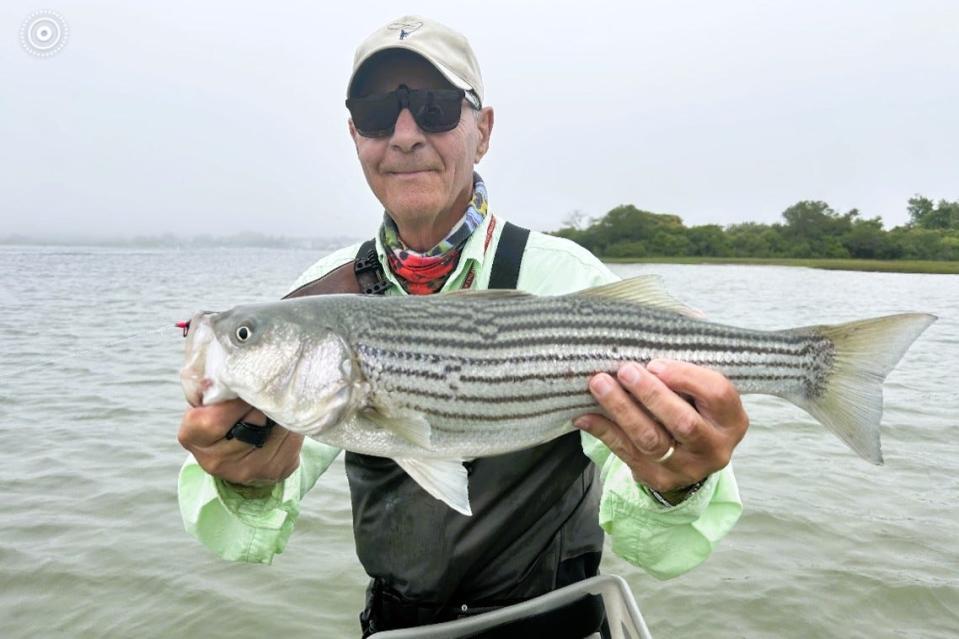
If you get out while the sun is still stretching its legs, it’s strong panfish time in the lakes of the St. Johns. Crickets and worms remain the time-honored attractants.
Three or four straight weeks now of striped bass chatter. The stripers love to mingle around the mouths of canals leading to the springs. Along with wild shiners, stripers will also attack artificials, and yes, they’re good dinner companions.
Halifax Sport Fishing Club
Two current calendar entries for the club, which is located at 3431 S. Ridgewood Avenue in Port Orange.
Up first is next Thursday’s (July 20) membership drive, complete with food and other activities. If you’re a new angler in the area or looking to step up your game, it’s not a bad place to hang out and learn a few things.
More info: HSFC.com.
Also, the club’s third annual kingfish tournament is slated for July 29 and is billed as a “Gas Saver” tournament — state waters only, within three miles, and no more than 20 miles north or south of Ponce Inlet.
“Thousands of dollars” in prize money, according to tourney info. It’s a $200 entry for members, $250 for non-members. Check the website for more details.
Hook, line and clicker: Send us your fish pics
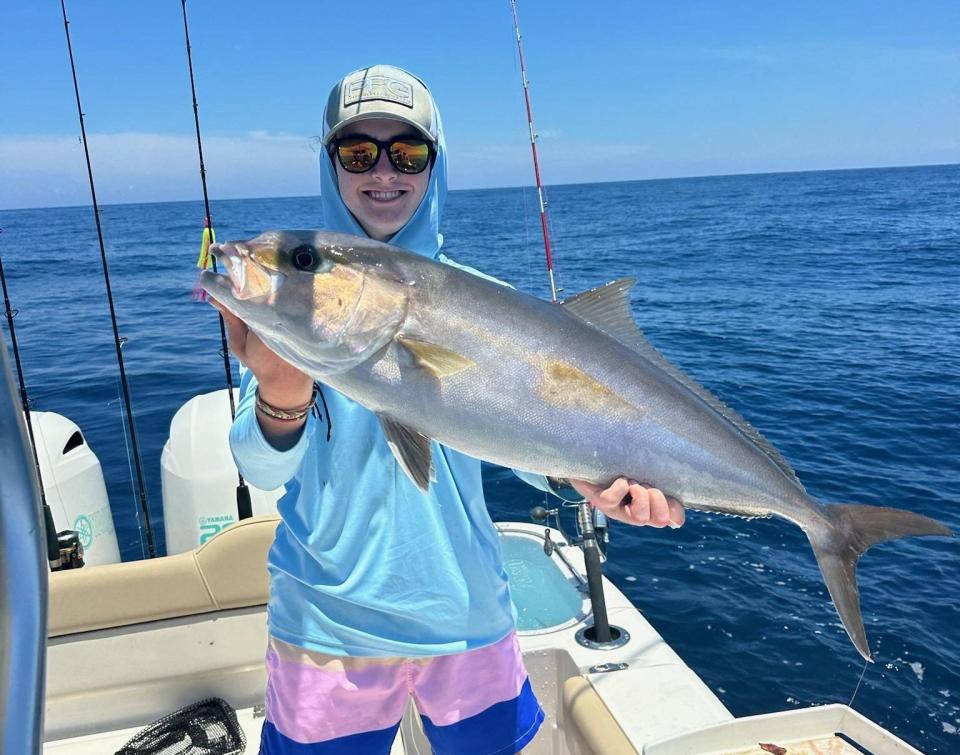
We want to see your most recent catch. Email your fish photos to ken.willis@news-jrnl.com.
Please include first and last name of angler(s), as well as type of fish (we're occasionally stumped). All are included with our online fishing report, and some occasionally make the print edition.
Do I need a fishing license?
You can find all the license info, including exemptions, on Florida's Fish and Wildlife Commission website: MyFWC.com. But the basics are: No: If you're 65 or older, 15 or younger, you don't need a license. No: If you're fishing with a licensed guide or charter boat, both of which purchase commercial licenses that cover their customers. Yes: Most everyone else, including visitors from other states. Yes: Even if you're a shore-based angler (shoreline, dock, pier, bridge, etc.). However: The shore-based license is free . . . But: You still need to register for that free license.
Where do I get a license and what does it cost?
Many bait shops sell licenses, as do the bigger retailers (Bass, Dick's, Walmart, etc.). Florida's FWC uses a third-party site for buying or renewing fishing licenses: GoOutdoorsFlorida.com. The cost: $17 for an annual license. Don't forget: Whether you're fishing fresh or saltwater, you need the specific license. Freshwater and saltwater licenses are both $17 annually.
I’m here on vacation, do I need a license?
Yes you do, and they're also available at GoOutdoorsFlorida.com or certain bait shops and big retailers. Cost: $17 for three days, $30 for seven days, $47 for a year.Also: Non-residents need to purchase that license even if they're just fishing from shoreline or shore-based structures. (Florida residents need that license, too, but they're free.)
This article originally appeared on The Daytona Beach News-Journal: Red snapper get two days in the sun; there's a reason it sounds crazy

